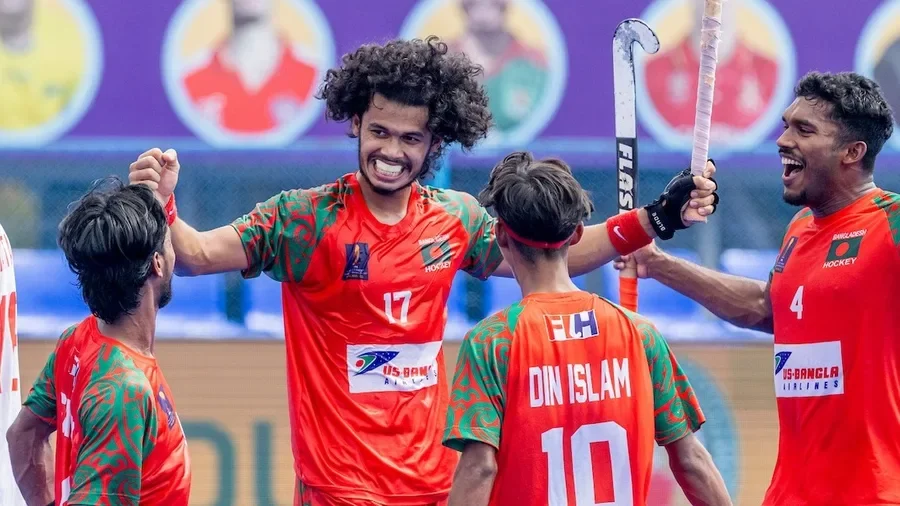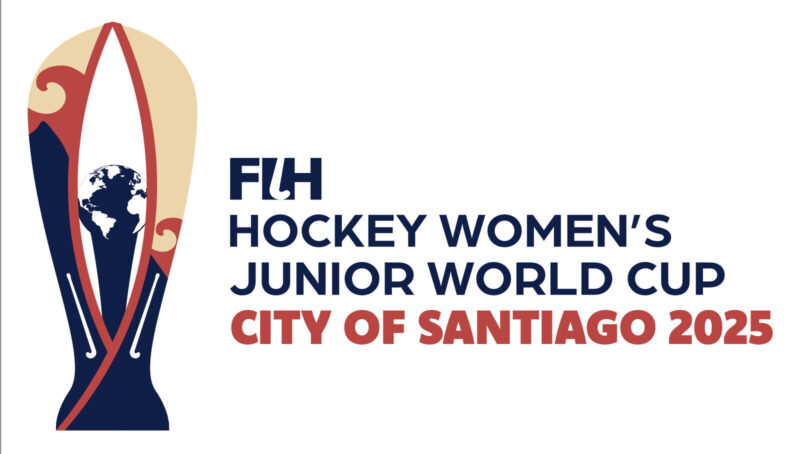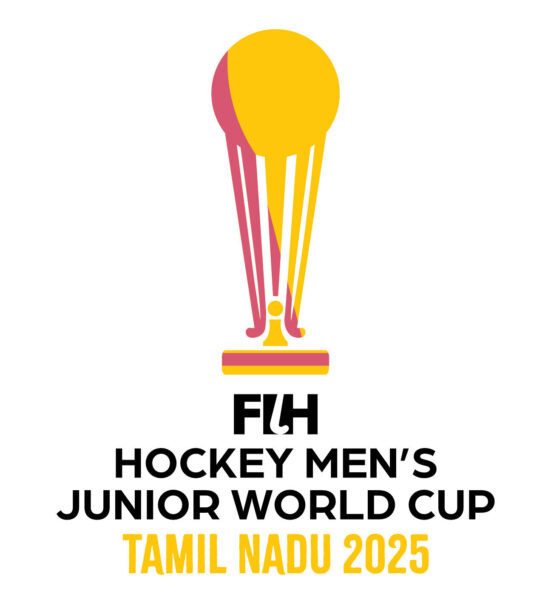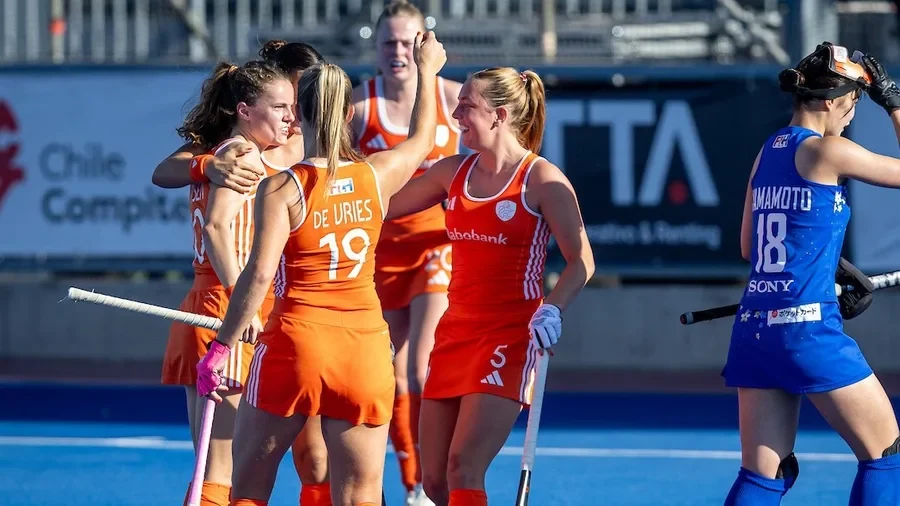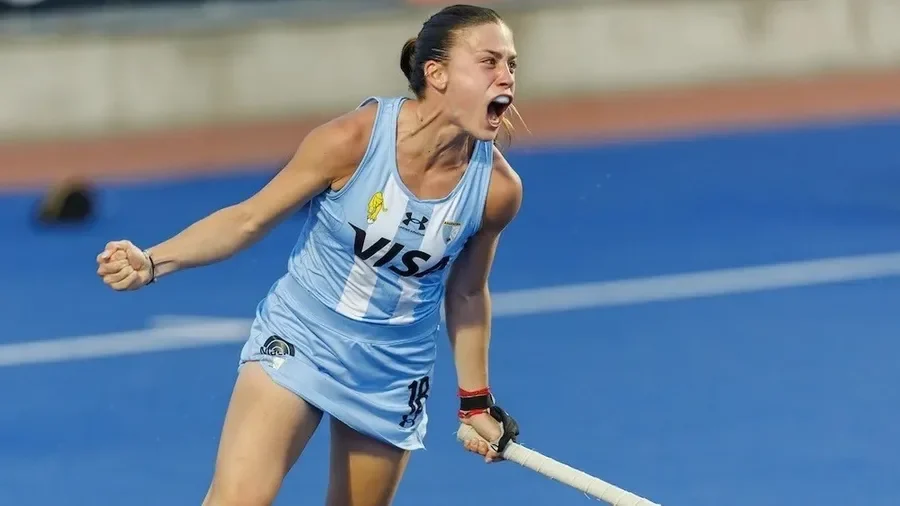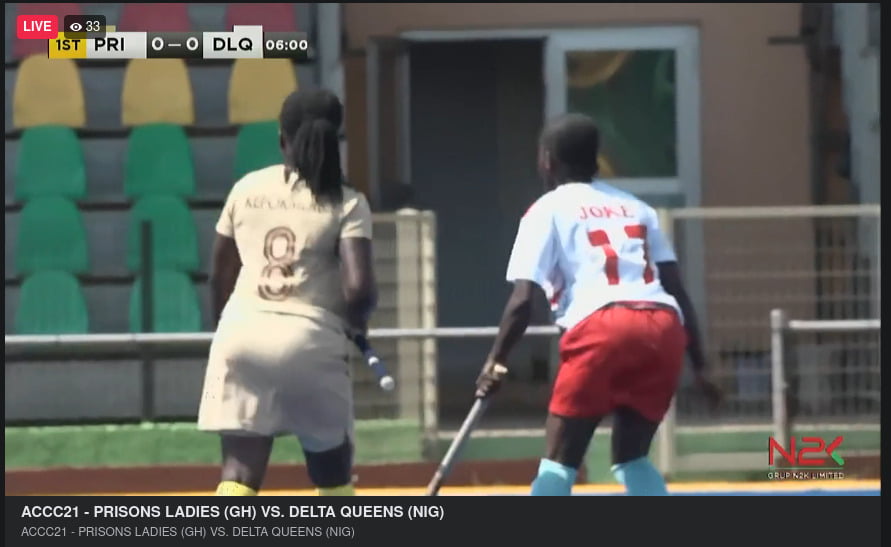04 Dec, 2025 The FIH Hockey Men’s Junior World Cup Tamil Nadu 2025 entered the classification rounds for the 9-16 and 17-24 positions on Thursday in Madurai and Chennai after a day’s break. The teams missing out on the quarterfinals are now vying for the best possible finish, with the best placed team in the 17-24 bracket also receiving the Challenger Trophy, an initiative from FIH President Tayyab Ikram. The day saw exciting hockey across eight matches in Madurai and Chennai, including the tournament’s first shootout, a historic win for Bangladesh and a tough grind for Australia. Here’s a blow-by-blow account of the proceedings. Namibia vs Austria [Full-Time Score: 2(0)-2(2)] The opening match for the 17thto 24thclassification positions produced the first shootout of the tournament that saw Austria scoring two goals to Namibia’s none and take home a win after the regulation time of 60 minutes ended at 2-2 in Madurai. All four goals were scored in the second half, as Namibia broke the deadlock in the 40thminute with John-Paul Britz’s penalty-corner strike. The next five minutes saw the game swinging like a pendulum. Austria equalised in the 42ndminute through Benedikt Meisel. The very next minute, Britz scored again off a PC to put Namibia ahead 2-1 but Austria closed the third quarter by making it 2-2, thanks to Julian Kaiser converting a PC. The last quarter didn’t produce any goals, and the match progressed to a tie-breaking shootout. Namibia’s one-one-one skills produced four disappointing failures, as Abraham Graham, Josh van der Merwe, James de Jager and Mathew Lassen failed to go past Austrian goalkeeper Lorenz Breitenecker. The two conversions for Austria by Meisel and Andor Losonci, thus, proved enough to confirm victory. “I had to keep the ball outside my goal. I specialise in shootout. I don’t know what else to say. I am really happy about it,” said Austria’s custodian and shootout star Brietenecker. “We are really motivated for the Challenger Trophy and want to give our best.” Bangladesh vs Oman (Full-Time Score: 13-0) Bangladesh outplayed Oman in Madurai, producing 13 goals to register a comprehensive and historic first win – courtesy a penalty-corner masterclass produced by Amirul Islam who scored five goals. Rakibul Hasan too scored a hat-trick, hitting three field goals. The Oman defence was left to fend off a flurry of Bangladeshi attacks that produced five more goals off the sticks of Mohammad Abdullah and Mohammad Saju, both of who scored a brace, while Obidul Joy struck once. “Winning is always good. That’s why we play hockey, to win. I think we progressed with every match,” said Bangladesh coach Siegfried Aikman. “Our target is to improve match by match and play the best hockey we can. We were in a tough pool but that gave us an opportunity to play at a level that we have never done. This World Cup with 24 teams is a blessing for teams like us. Now we know where we have to improve.” England vs Chile (Full-Time Score: 3-1) Disappointed to not be among the quarterfinalists, England began their classification-round (9thto 16thplace) journey with a 3-1 win over Chile at the Mayor Radhakrishnan Hockey Stadium in Chennai. The English team got themselves into a comfortable position by the 19thminute, scoring two goals — produced by Kaden Draysey and Max Anderson. The second quarter witnessed two more goals, with Chile cutting England’s lead to 2-1 when Javier Vargas got on the scoresheet in the 23rdminute. But Jonny Sturch-Hibbitt’s goal four minutes later restored England’s two-goal advantage at 3-1. The last two quarters saw some shoddy finishing, especially by England, leaving the second half of the match devoid of any goals. “It was a good (game). We needed to come out with good energy and the boys did well to getover the line. Looking forward to the next game and we’ll try to win every game from here,” said England’s Cole Pidcock. Looking back at the pool stage, he added, “We had a first game against Holland, probably one of the better teams here. We played really well; in fact, I think we played well the entire tournament.” Korea vs Egypt (Full-Time Score: 6-3) After struggling to hit their stride in the pool stage, Korea defeated Egypt 6-3 in Madurai on Thursday. Minhyeok Lee stole the thunder with four goals – three off penalty corners and one off a penalty stroke. Korea led 3-1 at half-time. After Egypt scored the first goal of the match in the 8thminute through Basel Abdelmonem on a penalty corner, the Koreans levelled it up with Lee’s first goal in the 18thminute. Soon after in the second quarter, JeongSeob Song and Seowon Park also found the mark to make it 3-1. Lee increased that lead to 4-1 just two minutes into the third quarter but Egypt and Abdelmonem’s second goal pulled it back. In the final quarter, Lee scored his third and fourth goal in the 50thand 52ndminute to place Korea comfortably ahead at 6-2. Egypt did score their third goal through Mohamed Ghanem, but it only came in the final minute of the match. Speaking after the match, Korea’s captain Seunghan Son said, “I think we had a good start and did well to lead 3-1 at half-time. Then we scored three more goals and had a good time.” South Africa vs Malaysia (Full-Time Score: 3-1) Jaydon Brooker’s brace led South Africa’s fighting 3-1 win over Malaysia, after the match in Chennai opened with a goalless first quarter. Brooker ended the stalemate in the 18thminute off a penalty corner to take South Africa to half-time leading narrowly at 1-0. Nine minutes into the third quarter, he converted another PC to put his side ahead 2-0. Malaysia fought back in the third quarter, when a 48th-minute goal by Aqil Mat reduced South Africa’s lead to 2-1. But the game was put to bed by Ross Montgomery who got the South Africans their third goal on a penalty corner with just over two minutes left on
